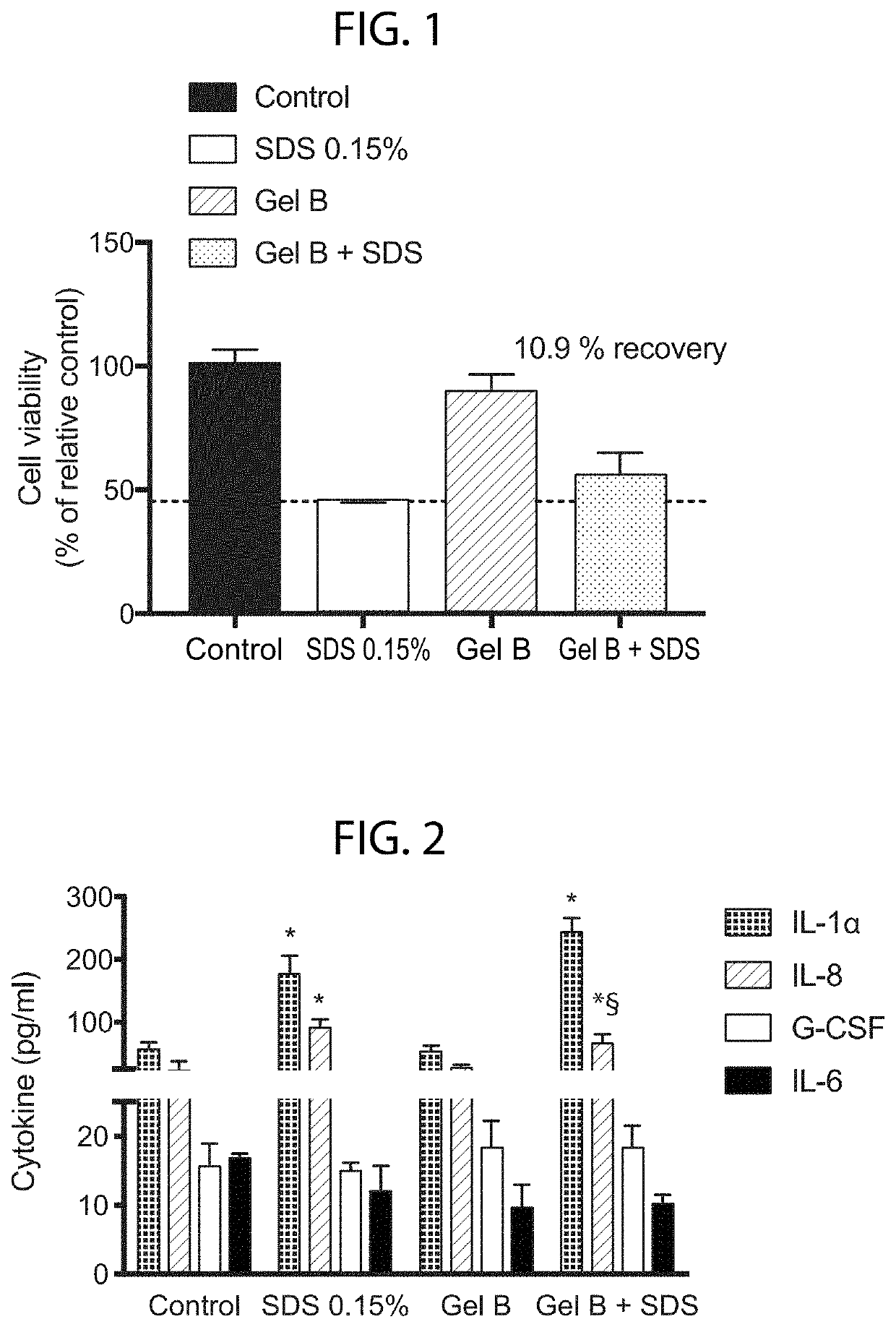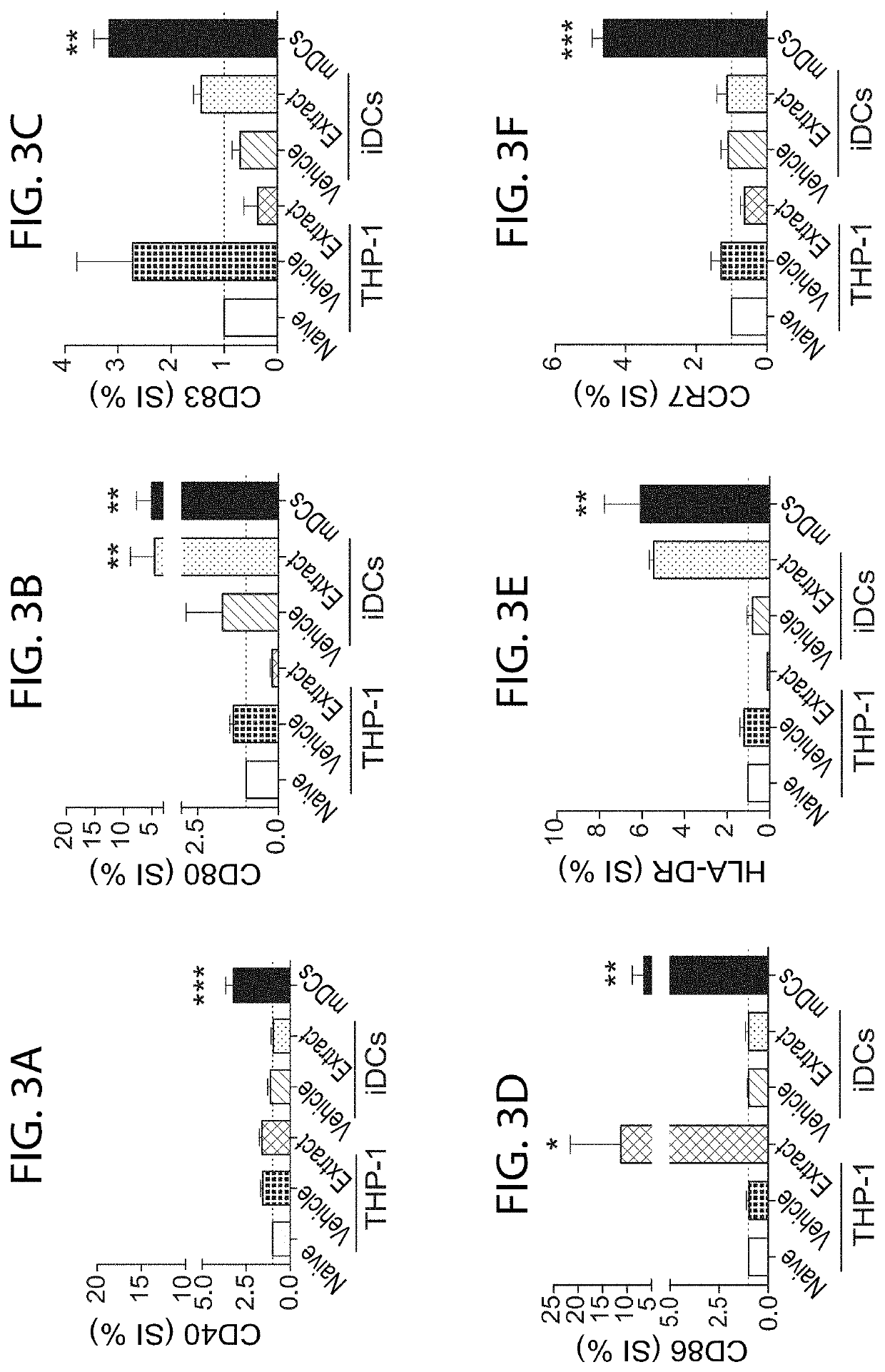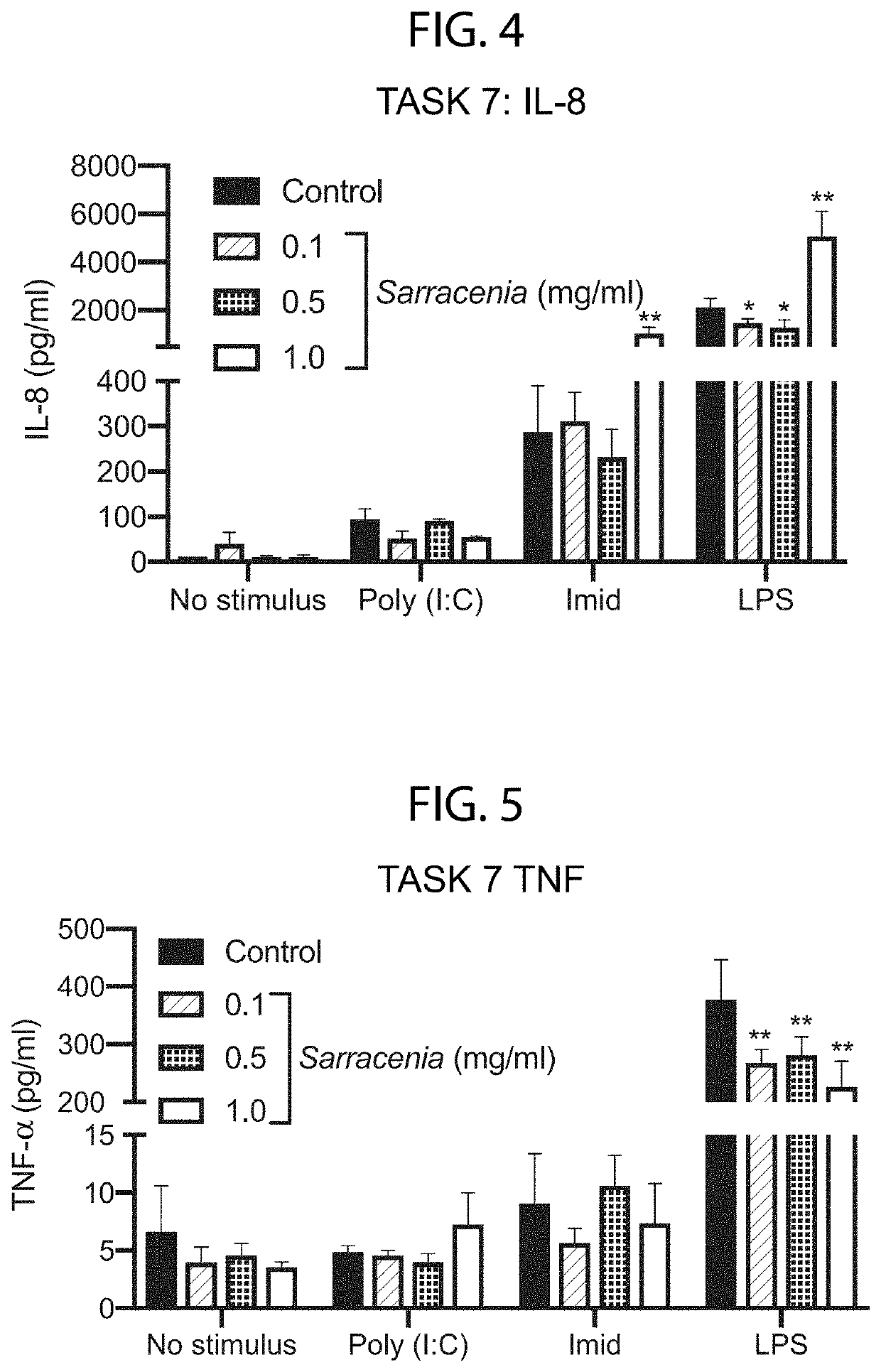Sarracenia-based topical compositions and methods of use thereof
- Summary
- Abstract
- Description
- Claims
- Application Information
AI Technical Summary
Benefits of technology
Problems solved by technology
Method used
Image
Examples
example 1
Evaluation of the Capacity of the Formulations Comprising Sarracenia Extracts to Repair Skin Irritant-Induced Skin Damage
Objectives:
[0100]Despite the uses of botanical formulations, including Sarracenia extracts, as components of anti-viral compounds for topical applications, there are no data on their capabilities for repairing the damage caused to skin by irritants.
[0101]A formulation of Sarracenia comprising the following ingredients shown in Table 1 was evaluated in reconstructed human epidermis (this formulation was used for all examples provided herein):
TABLE 1INGREDIENT% WT / WTWater (Aqua)77.7460549%Aloe Barbadensis Leaf Juice10.0000000%Alcohol Denat.1.7020000%Allantoin0.5000000%Lidocaine HCl0.5000000%Sarracenia Leucophylla Flower / Leaf / Seed / Stalk Extract0.1650000%Lavandula Angustifolia (Lavender) Flower Extract0.1565000%Melissa Officinalis (Balm Mint) Extract0.1000000%Melissa Officinalis Leaf Extract0.0565000%Glycyrrhiza Glabra (Licorice) Root Extract0.0320000%Hypericum Perfor...
example 2
Assessment of the Effect of Formulations Comprising Sarracenia Extracts on Dendritic Cells
Objective:
[0109]These experiments evaluated the impact of Sarracenia extract on DC. The human promyelocytic cell line, THP-1, was used as experimental model. THP-1 is a widely used model for primary human monocytes / macrophages. THP-1 cells are suitable for the differentiation of immature DCs (iDCs) and mature DCs (mDCs) in terms of phenotypic, morphologic and functional properties of DCs [15].
Methods:
[0110]For DC differentiation, THP-1 cells were treated for 5 days with rhIL-4 and recombinant human (rh) GM-CSF to acquire the properties of immature DC. Mature DCs were then generated from immature DCs by addition of rhTNF-α and ionomycin into the medium for 2 days. Immature DC were also exposed to Sarracenia extract (1000 μg / ml) or the vehicle base to evaluate its effect on DC maturation. As markers of DC maturation CD40, CD80, CD83, CD86, HLA-DR, CCR7 and IL-10, IL-12p40, TGFβ1 production were a...
example 3
Assessment of the Effect of Formulations Comprising Sarracenia Extracts on Immune Responses Generated by Toll-Like Receptor (TLR) Agonists
[0114]The immune response to invading microorganisms such as bacteria and viruses begins with the ligation of Toll Like Receptors (TLRs) on monocytes by TLR agonists that are expressed by the pathogen, which leads to activation of the immune system. One embodiment of the present invention is the use of the Sarracenia extract as an anti-viral agent; therefore, the ability of the formulation to modulate TLR agonist-induced immune responses was evaluated in vitro. The effects of the formulation on immune responses driven by TLR 3, 9, 7 / 8 agonists were assessed. LPS, a TLR 4 agonist, that typifies bacterial infections was used as a positive control immune stimulant.
Methods:
[0115]Naïve THP-1 cells were exposed for 24 to the TLR3 agonist poly(I:C) (100 μg / ml), to the TLR7 / 8 agonist imidazoquinoline (1 μg / m1), to the TLR9 agonist Class A CpG oligonucleot...
PUM
| Property | Measurement | Unit |
|---|---|---|
| Fraction | aaaaa | aaaaa |
| Fraction | aaaaa | aaaaa |
| Fraction | aaaaa | aaaaa |
Abstract
Description
Claims
Application Information
 Login to View More
Login to View More - R&D Engineer
- R&D Manager
- IP Professional
- Industry Leading Data Capabilities
- Powerful AI technology
- Patent DNA Extraction
Browse by: Latest US Patents, China's latest patents, Technical Efficacy Thesaurus, Application Domain, Technology Topic, Popular Technical Reports.
© 2024 PatSnap. All rights reserved.Legal|Privacy policy|Modern Slavery Act Transparency Statement|Sitemap|About US| Contact US: help@patsnap.com










